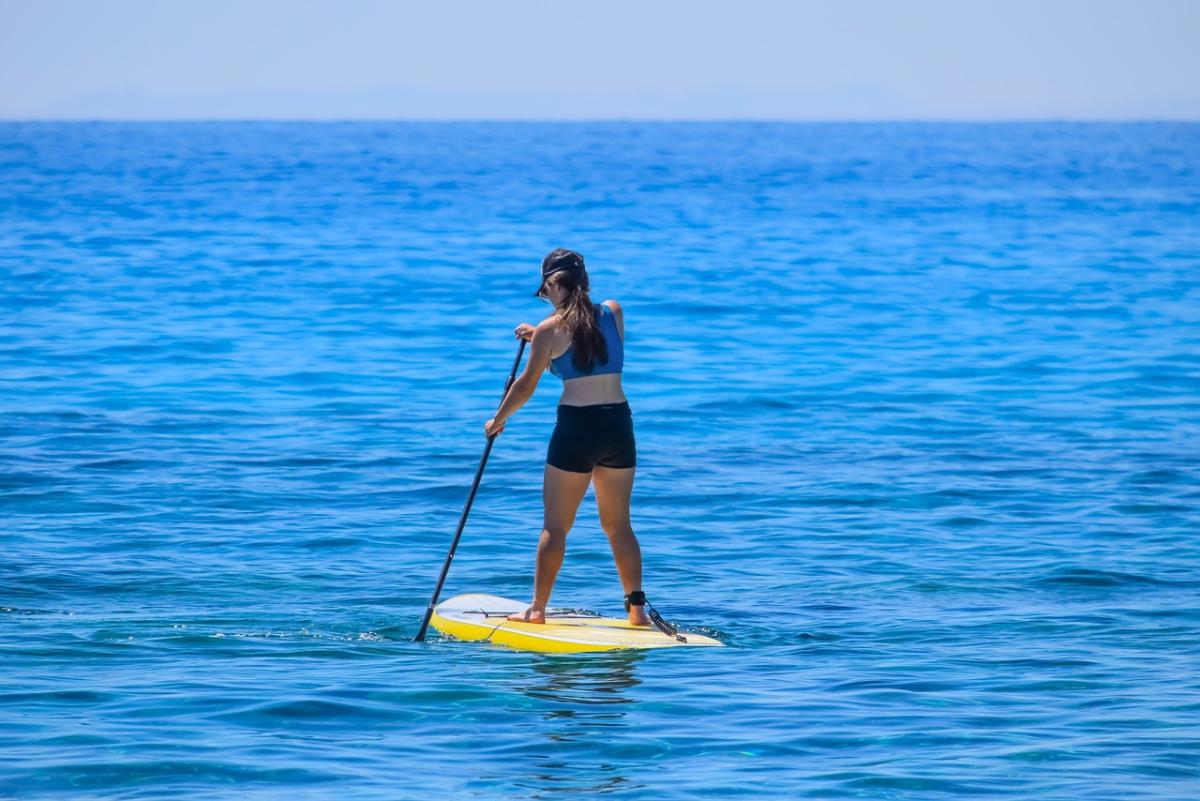So, you've decided to try paddleboarding - great choice! But with so many options available, how do you know which paddleboard is right for you? Here are a few key factors to consider when choosing your first paddleboard:
Size and Stability: As a beginner, it's important to choose a paddleboard that offers stability and balanced performance. Generally, longer and wider boards are more stable and easier to control, making them perfect for beginners. Look for boards that are around 10 to 11 feet long and 30 to 34 inches wide. These dimensions will provide the stability and balance you need while learning the ropes of paddleboarding.
Type of Paddleboarding: Consider what type of paddleboarding you plan to do. Are you interested in exploring calm lakes and rivers, or do you prefer tackling waves in the open ocean? For flatwater paddleboarding, an all-around board will be suitable. However, if you're into surfing, you'll need a shorter, more maneuverable paddleboard designed specifically for wave riding.
Construction Materials: Paddleboards are made from a variety of construction materials, each with its own advantages. The most common options are inflatable boards and solid epoxy boards. Inflatables are convenient for storage and transportation, while epoxy boards offer more rigid performance. Consider your storage space, transportation needs, and desired performance when choosing between the two materials.
Must-Have Paddleboard Accessories for an Unforgettable Trip
When it's time to hit the water and embark on a paddleboarding adventure, having the right accessories can make all the difference. Not only does the right gear enhance the overall experience, but it also ensures safety and convenience along the way. If you're planning an unforgettable paddleboard trip, here are some must-have accessories to consider:
Paddle: It goes without saying that a quality paddle is essential for paddleboarding. Opt for a paddle that is adjustable in length, lightweight, and durable. A good paddle will assist in maintaining balance, maneuverability, and control over your board, making it an indispensable accessory.
Leash: A leash is a crucial safety accessory that should always be worn while paddleboarding. It attaches to your ankle or calf and connects you to the board, ensuring that you won't get separated from it in case of a fall or strong currents. Be sure to choose a leash that is appropriate for your paddling location and activity level.
PFD (Personal Flotation Device): No matter your swimming ability, it's always wise to wear a PFD while paddleboarding. In some areas, it may even be mandatory. A PFD, such as a life jacket or inflatable belt pack, keeps you buoyant in the water and can be a lifesaver when needed. Find a comfortable and properly fitting PFD that doesn't restrict your movement.
Safety First: Key Gear to Enhance your Paddleboarding Experience
Paddleboarding is a fun and exciting water sport that allows you to explore the serene beauty of lakes, rivers, and oceans. However, it is crucial to prioritize safety and be well-prepared before embarking on your paddleboarding adventure. To ensure a safe and enjoyable experience, here are some essential gear recommendations you should consider.
Personal Flotation Device (PFD): Wearing a PFD is vital for your safety while paddleboarding. Even if you are a strong swimmer, unexpected incidents can occur, such as sudden changes in weather conditions or equipment failure. Invest in a comfortable and properly fitted PFD designed for paddleboarding to provide buoyancy and keep you afloat in case of any mishap. Leash: A leash is a crucial piece of gear that attaches you to the paddleboard, preventing it from drifting away in case you fall in the water. It ensures that you remain connected to your board and makes it easier to retrieve in case of an accidental fall. Make sure to choose a leash appropriate for the type of paddleboarding you will be doing, such as ocean, river, or flatwater paddling. Personal Safety Whistle: Carrying a personal safety whistle is highly recommended for paddleboarders as it can be used to attract attention or call for help in case of an emergency. It is a compact and lightweight device that can easily be attached to your PFD or worn around your neck. Should you find yourself in a challenging situation, a whistle can be a lifesaving tool to communicate distress.Mastering the Art of Paddleboard Storage and Transportation
One important aspect of owning a paddleboard is knowing how to properly store and transport it. Whether you live near the beach or enjoy exploring different bodies of water, having the right storage and transportation system is essential for keeping your paddleboard safe and in good condition.
When it comes to storage, the first thing to consider is the space you have available. If you have a garage or a shed, you're in luck! These provide ideal storage spaces to protect your board from the elements. Make sure to store it in a vertical position, using a wall-mounted rack or padded hooks to prevent any damage. Alternatively, if space is limited, you can also store your paddleboard horizontally, using a storage rack with level supports to distribute the weight evenly.
Transporting your paddleboard safely is equally important. If you have a truck or an SUV, using a roof rack is a great option. Make sure to invest in high-quality, padded roof racks specifically designed for paddleboards. If you have a smaller vehicle, consider using soft roof racks that can be strapped to your car's roof. These are versatile and easy to install, allowing you to transport your board securely.
By mastering the art of paddleboard storage and transportation, you can ensure that your board stays in excellent condition and is always ready for your next water adventure. Remember to choose the right storage method for your space and invest in reliable transportation equipment to enjoy your paddleboarding to the fullest.



